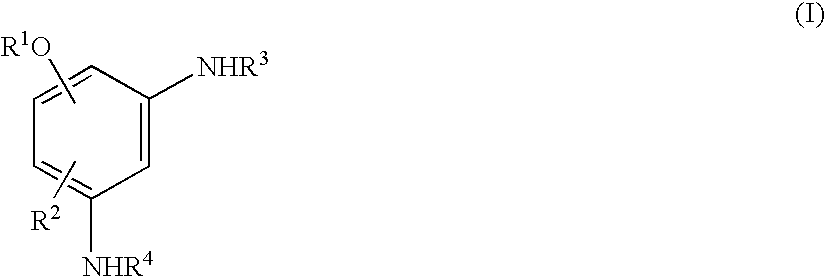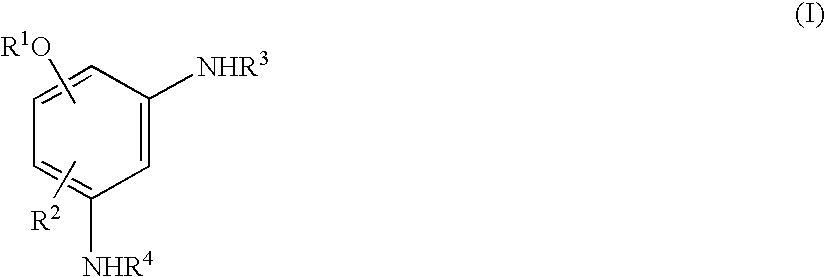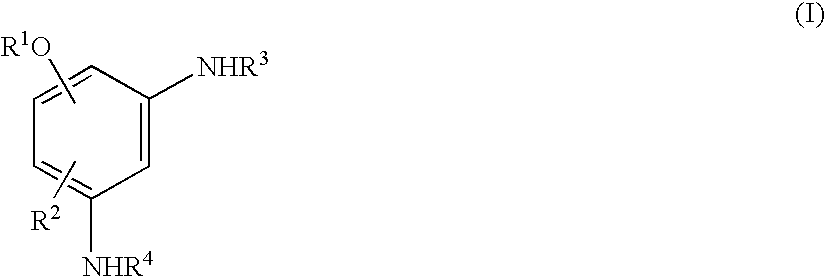Novel coupling components
a technology of coupling components and components, applied in the direction of dyeing process, hair cosmetics, organic chemistry, etc., can solve the problem of not being able to achieve a hair shad
- Summary
- Abstract
- Description
- Claims
- Application Information
AI Technical Summary
Benefits of technology
Problems solved by technology
Method used
Image
Examples
examples
1 Syntheses
1.1 2,6-Bis-((2-hydroxyethyl)amino)-4-methylanisole
[0242]
1.1.1 2,6-Diamino-4-methylanisole dihydrochloride
[0243] 2,6-Dinitro-4-methylanisole (100 g), 1.35 L of methanol, 150 mL of water and 1 g of Pd / C (5%) were placed in an autoclave and hydrogenated for 12 hours at 50° C. with hydrogen at a pressure of 50 bar. Subsequently, the autoclave was allowed to cool down and the formulation was poured into 1.0 L of half concentrated HCl. The catalyst was filtered off and the filtrate was evaporated to dryness in a rotary evaporator and dried under vacuum overnight.
[0244] Yield: quantitative
1.1.2 Bis(2-chloroethyl)(2-methoxy-5-methyl-1,3-phenylene) biscarbamate
[0245] 2,6-Diamino-4-methylanisole dihydrochloride (56 g) and 134 g of calcium carbonate were added to 1 L of dioxane and heated to 90° C. Within a period of 15 minutes, 80 g of 2-chloroethyl chloroformate were added and the formulation was stirred for a further 4 hours at this temperature and then allowed to cool dow...
PUM
| Property | Measurement | Unit |
|---|---|---|
| temperatures | aaaaa | aaaaa |
| temperatures | aaaaa | aaaaa |
| pH | aaaaa | aaaaa |
Abstract
Description
Claims
Application Information
 Login to View More
Login to View More - R&D
- Intellectual Property
- Life Sciences
- Materials
- Tech Scout
- Unparalleled Data Quality
- Higher Quality Content
- 60% Fewer Hallucinations
Browse by: Latest US Patents, China's latest patents, Technical Efficacy Thesaurus, Application Domain, Technology Topic, Popular Technical Reports.
© 2025 PatSnap. All rights reserved.Legal|Privacy policy|Modern Slavery Act Transparency Statement|Sitemap|About US| Contact US: help@patsnap.com



